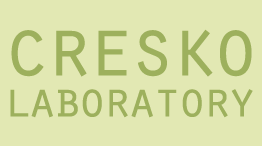Ecological & Evolutionary Functional Genetics and Genomics
We still have an incomplete understanding of how changes in allele frequencies affect distributions of developmental processes in natural populations, and, once evolved, how these developmental programs alter subsequent evolutionary change. The goal of our lab is to fill this gap in our knowledge, and provide answers for numerous evolutionary questions that remain incompletely or poorly answered:
- How large are evolutionary steps, in terms of number of genes and their allelic effects?
- What is the molecular, genetic and developmental basis of phenotypic parallelism and convergence?
- How does genetic architecture, interacting with the environment, affect the input of new genetic variation and response to selection?
- To what extent do genes and pathways that segregate variation within species also contribute to divergence among higher-level taxa?
We use a variety of molecular, developmental, population and quantiative genetic approaches to address these questions. Most of our empirical work focuses on the threespine stickleback, Gasterosteus aculeatus, and members of the closely related family Syngnathidae. Threespine stickleback fish are restricted primarily to marine, brackish and coastal freshwater habitats of the northern hemisphere. Freshwater stickleback populations have undergone rapid diversification in many recently deglaciated regions, giving rise not only to a diverse array of phenotypes, but also to new species.
Much of our work uses experimental crosses to map the genetic basis of traits, functional analyses to understand the developmental roles of identified loci, and comparative genomic and gene expression studies to understand divergence among species. We have also helped develop high throughput genotyping techniques using next generation Illumina sequencing to examine genome-wde patterns of divergence. In order to understand the genetic basis of divergence among lineages, our laboratory is also styudiying the formation of highly modified bony structures of pipefish and seahorses, members of the order Gasteriformes along with stickleback.
Lastly, we are studying the evolution of duplicated genes and genomes, and their relationship to organismal diversity. Half of all vertebrate species are teleost fish, and a whole-genome duplication event at the base of the ray-fin fish may have played a significant role in the teleost radiation.

